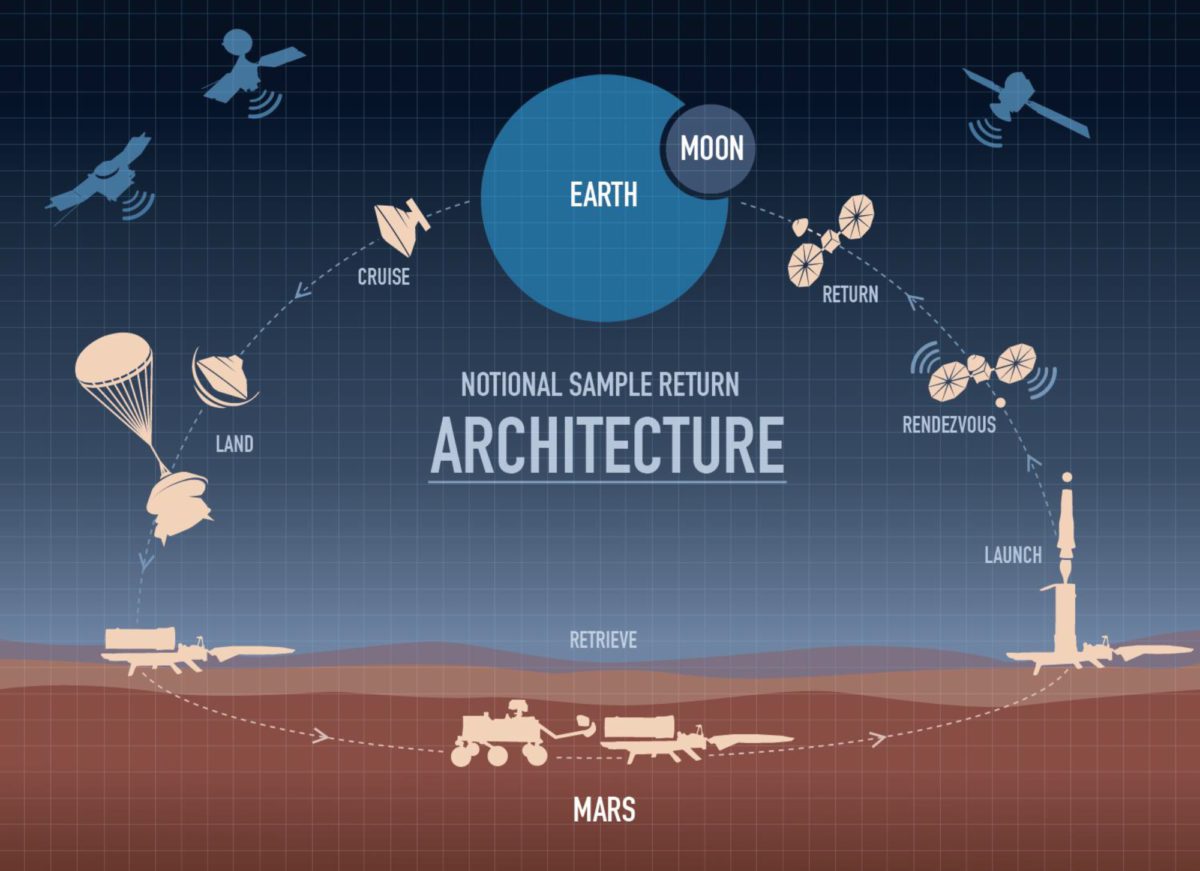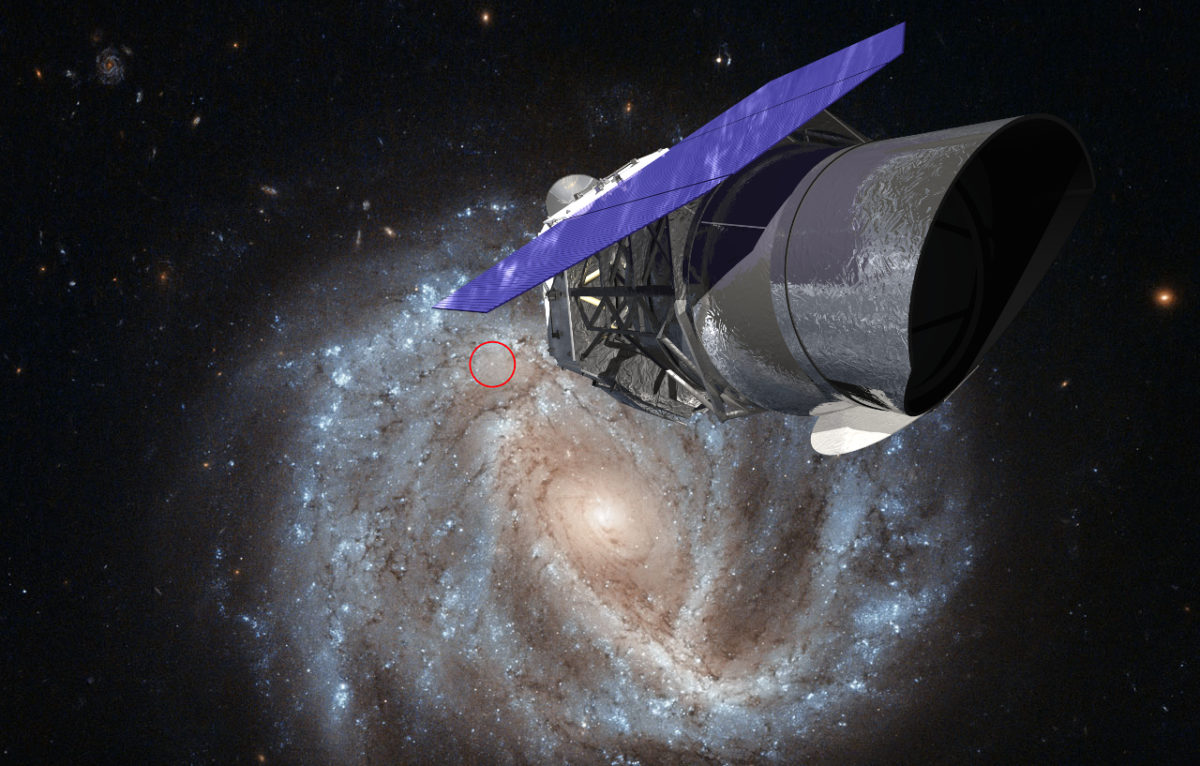Casey Dreier • Mar 11, 2019
Amidst Cuts to NASA, Mars Sample Return May Finally Happen
The President's budget request for NASA (released on 11 March) defies easy characterization. It includes many welcome proposals: $109 million for a new Mars Sample Return mission, an accelerated launch timeline for Europa Clipper, and funding increases for future human deep-space efforts, to name a few. Yet it also includes a frustrating litany of cuts previously and resoundingly rejected by Congress, attempting again to kill the WFIRST space telescope, multiple Earth Science missions, and the entirety of NASA's Education/STEM outreach division.
NASA's budget during the Trump Administration. The vertical axis displays both NASA's total congressional appropriation in billions of dollars and the amount requested by the President. The horizontal axis is fiscal years. NASA's full budget history dataset is available to view or to download as an Excel spreadsheet.
The budget request does contain significant increases for the Administration's lunar initiative, primarily for the Lunar Gateway project, which would grow from $450 million to $820 million. The Administration proposes additional increases for technology development related to lunar exploration and deep space habitability, though success in these efforts will depend on maintaining growth and controlling program costs in subsequent years.
Despite these positives, the FY 2020 budget request proposes a $481 million (2.2%) cut to the space agency compared to the FY 2019 budget enacted by Congress just last month. We don't yet know all the details; only the top-line program amounts have been outlined, with more a detailed proposal scheduled for release on 18 March. But a cut is a cut. This would be an inauspicious start for NASA in the first year of a new decade.
Here's a summary of what we know so far:
| 2019 Enacted | 2020 PBR* | % Change | |
|---|---|---|---|
| NASA | $21,500 | $22,619 | +5% |
| Science | $6,906 | $6,393 | -8.7% |
| Planetary Science | $2,758 | $2,712 | -1.7% |
| Earth Science | $1,931 | $1,780 | -7.8% |
| Astrophysics | $1,496 | $1,197 | -20% |
| WFIRST | $312 | $0 | -100% |
| JWST | $306 | $352.6 | +15% |
| Heliophysics | $720 | $704 | -2.2% |
| Exploration | $5,050 | $6,396 | +27% |
| Orion Crew Vehicle | $1,350 | - | - |
| SLS | $2,150 | - | - |
| Lunar Gateway | $450M | $490 | +9% |
| Space Technology | $927 | $1,146 | +24% |
| Space Operations | $4,639 | $4,285 | -7.6% |
| Aeronautics | $725 | $666 | -8.1% |
| STEM Engagement | $110 | $0 | -100% |
| Safety, Security, & Mission Services | $2,755 | $3,084 | +12% |
| Construction and Environmental Compliance | $348 | $600 | +72% |
All values are in millions of dollars. *Includes the supplemental FY 2020 budget request released in May 2019.
I am most excited for the promised start of a Mars Sample Return (MSR) mission. It is not yet clear whether this proposal represents the coveted “new start” for a program or just additional pre-formulation funding, but NASA is planning to ramp up spending on MSR over the coming years, reaching at least $400M in 2023.
Mars Sample Return has enticed the scientific community for decades, though it has always remained just out of reach. Success will require a series of technically demanding missions. In sum it represents the most difficult and exciting effort ever attempted on the Red Planet.
And it's finally about to happen.

The Mars 2020 rover will take the first step by caching a carefully selected and well-documented set samples on the surface. The next mission will be to retrieve these samples from Jezero crater and launch them into Mars orbit. The Administration proposes $109 million for FY2020 to develop this sample-retrieval mission
A third mission would rendezvous with the orbiting samples and return them to Earth. ESA is considering a major contribution to that third spacecraft, with a decision due later this year.
The Administration also proposes to accelerate the development of Europa Clipper toward a launch in 2023 as opposed to the late 2020s. NASA had previously resisted efforts by former Congressman John Culberson to commit to such an aggressive development schedule because of the financial commitment required to be ready so quickly. In this budget NASA appears to have accepted the timeline in exchange for launching Europa Clipper on a commercial rocket instead of an unproven Space Launch System vehicle. NASA claims the switch to a commercial rocket would save as much as $700 million, even though it would add a few years to the journey. A less generous interpretation is that NASA is worried about SLS being available to launch Europa Clipper. Eric Berger at ArsTechnica has an excellent summary of the implications of the FY 2020 budget for the SLS, which has experienced ongoing delays and must serve first the needs of the human spaceflight program.

The FY 2020 budget proposal tries a second time to make several cuts that Congress previously rejected out of hand. Most relevant to The Planetary Society is the Wide-Field Infrared Survey Telescope (WFIRST), which received $312 million from Congress in 2019. WFIRST has strong supporters, including Senate Minority Leader Chuck Schumer (D-NY) whose state received a sizeable NASA contract to work on the space telescope. The Planetary Society supports this mission, which is the top decadal recommendation and has potential to provide new insights into exoplanetary research.
The administration also repeated its proposal to completely defund NASA's Education/STEM outreach division, which includes the very popular Space Grant program. Space Grant provides small funding opportunities to students and educators in all 50 states and additional U.S. territories. Attempting to defund Space Grant is quixotic. If there's anything close to a sure bet left in politics, it's the continuation of this popular program.
These proposed cuts are frustrating, though I do believe Congress is likely to push back. The Planetary Society considers it particularly important that the U.S. continue to increase NASA's budget to enable initiatives in human spaceflight; progress toward Mars Sample Return; and retain strong science funding for Earth science, astrophysics, and educational outreach. That's all possible. Congress has increased NASA's budget by an average of 4% per year since 2014. The Planetary Society urges an increase of 5% for 2020. That would represent a strong start for the coming decade, a decade that holds the potential for breathtaking exploration and discovery.
These are the highlights. More information will be coming out next week from the Administration, and we'll respond with analysis. Visit our new NASA FY 2020 budget page to follow all of our coverage, analysis, and details for this budget.
The Time is Now.
As a Planetary Defender, you’re part of our mission to decrease the risk of Earth being hit by an asteroid or comet.
Donate Today

 Explore Worlds
Explore Worlds Find Life
Find Life Defend Earth
Defend Earth

